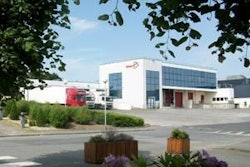The question of producing sows with 40 piglets, and the subsequent implication on trace mineral nutrition, was presented at the 2011 Alltech International Animal Health and Nutrition Industry Symposium in Lexington, Ky. “What do we mean by 40 piglets?” asked speaker W.H. Close of Close Consultancy. “Weaned, born alive or total born?”
“At 2.4 litters per sow per year, to achieve the above number the sow would need to produce 20, 18 or 16 piglets per litter,” Close said. While this is possible, he questioned the wisdom of such numbers. He offered instead the number of 40 weaned piglets as a better target. “The latter number considers not only litter size, but also the parity distribution of the sows in the herd, as well as sow longevity.”
Role of minerals
“It is known that organic minerals better meet the needs of the modern hyperprolific sow by ensuring that the metabolic, endocrinal and physiological needs of growth, reproduction and immunity are met,” Close said. With this is in mind, he noted that the total replacement of inorganic minerals with organic minerals have been shown to increase the size of litters by at least 0.5-1.0 piglets per litter and also increase the productive life of the sow.
However, he noted that as litter size increases, piglet birth weight decreases, with results suggesting that for each extra piglet born, birth weight decreases by 40 grams and variability is increased.
Further issues of larger litters include:
- Water percentage in developing piglet increases
- Percentage of protein (lean) and fat decreases
- Muscle development is affected
- Glycogen, mineral and vitamin reserves may suffer
As a result, the piglet at birth is more vulnerable and has a reduced immune status, according to Close. This, in turn, may lead to increased vulnerability and mortality.
Organic minerals
Using organic minerals in the diet of the sow during gestation and lactation benefits the piglet at birth, weaning and beyond, Close asserted. He noted that certain minerals, such as Bioplex Fe and Sel-Plex, and Bioplex Sow-Pak have been shown to increase the mineral status of the piglet.
“The total replacement of inorganic with organic minerals not only benefits the sow in helping to achieve genetic potential for reproduction, but also the piglet in ensuring higher quality piglets at birth and weaning, and therefore greater survivability and higher subsequent performance,” Close said.



.jpg?auto=format%2Ccompress&fit=crop&h=167&q=70&w=250)














